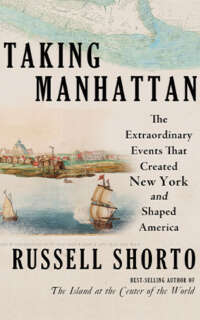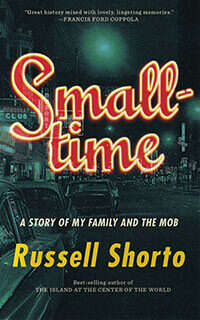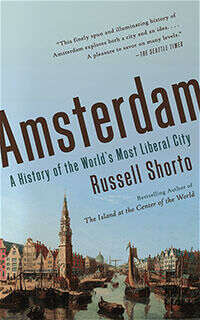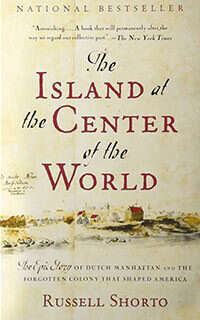Shangri-La-Di-Da
GQ
by Russell Shorto
May 01, 2005
Appropriately enough for one of the most intense countries on earth, the experience of the kingdom of Bhutan begins before you get there: Hanging in 10,000 feet of blue sky, you see the rippling knuckles of the Himalayas arrayed below and snowbound ridges falling into green-black clefts. It’s a landscape that could serve for a Bond-film intro, and you can almost hear the theme music kick in as the pilot does what he must to get you on the ground — a theatrical bank-and-drop maneuver into an hourglass-shaped bowl in the mountain contours, a feat so rare for commercial air traffic it requires special pilot training. After the quick descent, the next bit comes up fast — threading the neck of the hourglass while the aircraft barrels in just above the tree line. There’s a stand of stressed-looking pines on the right that, on my flight, the wing came moderately close to paring. Why place an airport in such a nervy spot, you might reasonably ask, unless it’s to give visitors a quick indoctrination into the Buddhism that infuses the place: practice in the art of letting go of mortal concerns? The logic of the answer is impeccable and a clue to everything about the realm you are about to enter. This is the only location in the country with enough flat area to land a jet. There are those who would dispute even this claim.
As the plane comes to rest on the tarmac and its engines ease down from their high whine, you take stock. On a bright winter day, the chain-link fencing and naked mountains give a stark welcome. Then you note that the people on the tarmac are wearing what look like militaristic bathrobes, which turn out to be not uniforms but the national dress. For me this was a strangely powerful indication that I was someplace really different. I mean, if baggage handlers are sporting indigenous garb, then all bets about the world you are entering are off.
Bhutan is one of the most obscure nations on earth, a country wedged between India and China that is smaller than West Virginia and has a fraction of that state’s influence on world affairs. It sits high in the Himalayas but at the latitude of Florida, which means permafrost ridges alternate with valleys of oranges and mangoes. That hip new innovation, the paved road, reached here in the 1960s. Television arrived in 1999. There still is not a single traffic light.
Describing the government is like beginning a fairy tale: There is a king who married four queens, all of whom are sisters. The national beverage is butter tea, which is worse than it sounds. The national dish is hot chilies in a cheese sauce, which is better than it sounds but hardly something to build a cuisine around. The official language is Dzongkha, which is related to Choekey, though many speak Tshangla. The monetary unit is the ngultrum. Before it was introduced in the 1970s, there was no national currency.
This isn’t one of those countries that are crazy quilts of local temples sharing a wall with Starbucks and KFC outlets. And it isn’t a living museum maintained for visitors. It’s the real deal: a medieval Asian culture playing itself out below the radar of twenty-first-century society. As such, it is an ultimate travel experience, what travel used to be about before the vapors of globalization penetrated all but the remotest corners of the planet.
Tourist accommodations are basic. In fact, tourism began only in 1974, by accident, when the government built a smattering of hotels to house guests coming for the king’s coronation; these became a de facto tourist infrastructure. Today, while clean, they are deteriorating and project a stolid, Soviet-style demeanor. You want sleep? they seem to say. Here is bed. But that’s okay, right? If you are interested in Bhutan, you are a hiker, a trekker, a seeker after Buddhist wisdom and Himalayan culture, so you’re the sort to prefer bedding down if not under the stars then in a simple hermitlike cell, no?
Maybe no. It happens that a boutique luxury-hotel outfit named COMO recently managed to insinuate itself into the Bhutanese system and won a concession to bring heated towel racks and climate-controlled spa facilities and in-room yoga mats to the country. The company dispatched a SWAT team of fashion-forward young hoteliers from around the world to this primordial setting, armed with hipster-service-industry training in London and Sun Valley and very definite ideas about things like stemware, with the intention of creating a zone of understated luxury. What intrigued me was not whether there are enough well-heeled devotees of Himalayan Buddhism out there to fill the beds, but whether this clutch of high-style hotel staffers constitutes an outpost or an advance guard. Is the rest of the processed and digitized outside world lined up behind them, ready to invade? My task was a lonely one, but someone had to do it: travel to one of the last pristine places on earth, survive the jarring juxtaposition of high-end comfort and medieval culture, and decide, from my lofty perch, whether the one will be the ruin of the other: whether this is the beginning of the end for Bhutan.
Before stepping into the hotel’s serene and minimalist lobby, consider the surroundings. The road from the airport maunders northward, following a jade-colored river toward snowcapped peaks. Your SUV pauses for cows, swerves around stray dogs, then comes to a full stop for the very good reason that the road has. From here a trail winds upward in the direction of the snowball-shaped summit of Mount Jhomolhari, a mountaineer’s dream (no climbing: Bhutanese peaks are sacred and thus off-limits). As we pulled up, six or seven laden pack horses were stopped here at the road’s end, their owners standing around like people who were putting off something arduous. These travelers, my guide casually told me (the only way to travel in Bhutan is with a government-sanctioned guide and driver, and it would be absurd to do it on your own even if you could) were semi-nomadic yak herders from the high slopes. They had made the several days’ journey on foot down the mountain trails to trade their products — yak cheese and incense they make from cypress and juniper — for salt and rice, and were now headed back up the slopes. Semi-nomadic yak herders are the sorts of people you run into in Bhutan.
The hotel in question, the Uma Paro, sits on a hilltop looking down into the langorous sweep of the Paro Valley, framed by snowy ridges and including one of the magnificent dzongs, the massive fortress/monasteries that anchored Buddhism in the country, and the town of Paro. Picture a one-street Old West town but with the windows of the buildings cut into Asian-looking dome shapes and lines of red chiles hung out everywhere to dry and you will have an idea of Paro. The hotel is the brainchild of Christina Ong, a Singaporean and one of the richest women in the world, whose properties include the Metropolitan Hotel in London, an exclusive resort in the Turks and Caicos islands, and the Uma Paro’s twin, on Bali. The Uma idea is small hotels exquisitely plopped into culturally rich settings. It aims to attract a holistic, mind-and-body, museum-fancying type, and has a philosophy akin to Star Trek’s “prime directive”: minimal interference with the native culture. The hotel is done up in the local architectural style — whitewashed earthen walls with painted woodwork, creating a Himalayan hacienda look — so that it fits fairly unobtrusively into the surroundings. There are a mere twenty-three rooms, plus a handful of villas scattered around the property, which otherwise consists of blue pine trees and scrub. Wandering out onto the road, I encountered not hordes of starving peasants clawing to get in but a group of kids, in neat uniforms, waiting for a bus to take them to a school picnic.
Nevertheless, I felt I had a moral duty to scoff at the luxury of the hotel. Bhutan is, after all, one of the poorest countries on earth, with an annual per capita income of $1,300, on a par with Rwanda’s, and a night at the Uma Paro can go as high as $1,200 for a villa. Alas, I was uncomfortably comfortable in the place. Partly, that’s because it isn’t over-the top. Surround me with Carrara marble and I feel like a vagrant who’s about to be busted for loitering, but casually hip I can deal with.
The worldly-way-station atmosphere is maintained by the young managers of the place — Aussies, Americans, Brits, Malaysians— who periodically stop to marvel, over an Indian beer, at the majestic strangeness of the spot their careers have landed them in or to trade war stories about the difficulties of procuring everything (mattresses, staplers, flour) in a country that has almost no manufacturing, few transport links with the outside world, and a Buddhist philosophy that makes even beef hard to come by even though cows are everywhere. (The locals don’t like to kill them.) The Bhutanese employees, meanwhile, are achingly eager to learn the arcana of pampering foreigners, and the cultural gap they have to ford is considerable. Philip Bowen, a caffeinated Englishman who is the hotel’s outdoor-activity director, told me some of the restaurant’s employees had to be trained in the ways of the knife and fork, never having used cutlery. That stands in freakish contrast to the restaurant itself, which turns out pan-Asian dishes flecked with local accents — e.g., salad of sugar-cured yak with roasted-pepper salsa and lemon oil.
Uma isn’t alone in colonizing Bhutan. The Aman Resorts chain, whose outposts in places like Bali and Bora-Bora have long drawn your Jaggers and Gateses and Sultans of Brunei, occupies an even more exclusive end of the tourist spectrum, and recently it, too, established a base in the country. But where you could eke out a night at the Uma for as little as $210 (solo, in the off-season, with no frills), a basic room at the Amankora costs $930. I looked in on the Amankora; the rooms seemed comfy enough, and the property is certainly unobtrusive (the Aman people are fans of zero-scaping, which is a word that means they didn’t bother to plant shrubs), but here my moral gag reflex suddenly kicked in. The view out the picture windows is of an Iron Age farming village where, the day before, I had enjoyed the hospitality of a farmer and horseman whom my guide knew. There was no furniture in the man’s house — people ate and slept on the floor — and the only heat came from the wood-burning stove in the kitchen, which we sat around on yak-skin rugs. The idea of the richest people in the world literally using the poorest people in the world as their scenic backdrop is the sort of thing that reminds you why Marxism was once so attractive. As if from nowhere, and despite a generally moderate temperament, I found phrases like bloated fucking rich fucking pigs popping into my mind.
Ah, but there are other sides to this coin. For one thing, Bhutan is hardly the only bottom-rung country being graced with the presence of the moneyed. Boutique high-end properties litter the countrysides of Cambodia, India, and the Philippines. More to the point, this attitude of mine is itself a luxury. I was put in my place over lunch in the capital city of Thimphu with Kinley Dorji, editor of Bhutan’s national newspaper, and his wife, Pek Siok Sian, who is also a journalist. They are a worldly and urbane couple; both went to Columbia University’s journalism school in the late 1980s, and both think the advent of high-end tourism is a plus for Bhutan. Like others I spoke with, they look at nearby Nepal in some ways as a model of how not to develop. The Nepalese sacrificed much of their forest to farmers and loggers; the Bhutanese have made it law that 60 percent of their country remain forested. Nepal became the Himalayan way station for hippie tourism. The Bhutanese shudder at the thought of grimy, dope-smoking Westerners invading their fairy-tale kingdom and have devised a simple solution: All tourism must run through government-licensed tour operators, and tourists pay a standard fee of at least $200 per person per day (in the high season), a portion of which goes to the government. When you consider that this includes guide, driver, hotel, transport, and meals, it doesn’t sound so steep, but it’s a high enough tariff to keep the tourist hordes small and scrubbed.
Big international hotel chains have come knocking on Bhutan’s door in the past, but nobody answered. When the Aman and COMO groups approached, however, the reaction was different. “Bhutan’s tourism policy is high value and low volume,” Pek Siok Sian told me. “That made Uma and Aman a perfect fit.” Besides that, Dorji and Pek assured me that their countrymen don’t share my rich-and-poor qualms. “To any Bhutanese, the tourist who comes to these new hotels is just another rich foreigner,” Dorji said. “Whether they are spending $200 a day here or $1,500 is irrelevant, since both amounts are incomprehensible.” Epiphany: To the Bhutanese, we are all rich pigs.
Hotels aside, the larger issue is one that’s actively occupying Bhutan’s intelligentsia. With Frito-Lay delivery trucks riding the Hindu Kush and Chinese trinket merchants massing on the holy slopes of neighboring Tibet, we can safely say the business of global culture invading indigenous zones is in its later stages. Thanks to its centuries-long self-imposed isolation, Bhutan is one of the last authentic places: refuge of the snow leopard, a zone of nearly lost languages and Shangri-la – like jungled valleys. Now it’s opening up, and the country’s leaders are trying to figure out how to do that without mucking up what they have.
It’s 8 A.M., and I’m walking across rice paddies, entering a village in the Punakha Valley. The ground floors of all the houses are stables; people actually live with their farm animals. Stray dogs, some with open sores, greet me, and some of the locals have the vacant stares of poverty. But mostly you sense contentment. The main reaction to the sudden presence of a foreigner is shy interest. Begging is nonexistent in the country. No one hassles you. As we reach the temple beyond the village, we notice it’s festooned with prayer flags. It turns out a ceremony is taking place, and none other than the chief abbot, the country’s spiritual leader, is presiding. Once it’s over, I stand in a small queue of locals and receive a personal blessing from the pope of Bhutan. Anywhere else, such a figure would be thronged. In Bhutan he merits only a respectful clutch.
No one wants this sort of thing to change. And since Bhutan sat out the decades of corrosive development that much of the Third World endured, it finds itself in the unique position of being able to learn from others’ mistakes: to skip the smog stage and jump from ox and plow to wireless modem. “In neighboring countries, development meant factories and pollution and unskilled jobs,” said Dorji. “The king recognized that those countries forgot about something: happiness.” Thus came into being what is probably the world’s hippest governmental policy: Bhutan’s Gross National Happiness initiative, enunciated by the distinctively enlightened monarch, King Jigme Singye Wangchuck.
But change is afoot. The king has set his heart on gaining membership in the World Trade Organization. To that end, becoming a democracy would be useful, so he has been devolving some of his power into the hands of others; a constitution is in the works, and elections will likely follow. That may sound nice to a naïve outsider, but many Bhutanese smell trouble. Votes, they fear, will mean a manipulable power center and lobbyists for interests such as international mega – hotel chains and snack-food companies. When I raised the matter with Thuji Dorji Nadik, a betelnut-chewing, Fu Manchu – wearing offcial with the Department of Tourism, he was refreshingly blunt: “We don’t necessarily have a high opinion of democracy, because there you get stupid people making decisions.” Then he pointed to the November election in the United States as an example and giggled. Will Gross National Happiness give way to just plain gross?
Why not? Everything else on the planet seems to be going to hell. But while that would be bad for the Bhutanese, it would be worse for everyone else. How many places are left where they rank priorities in such an utterly different way that the experience of it hits you in the solar plexus? Bhutan’s most revered spot and most famous tourist site is a temple clinging to the edge of a stone cliff 9,000 feet above sea level. According to tradition, Buddhism arrived in the country with a lama who flew over the Himalayas on the back of a flaming tiger and alighted here. There to greet me at the top following the stiff two-hour climb, to pour holy water into my cupped hands after I made my obeisance to various effgies, and to lead me through the warren of polychrome shrines niched into the rocks, was a 10-year-old monk. His name was Ugyen, and he told me he had only recently begun his career, that his parents had given him to the temple, and that he would spend his entire life here, with the wind and the flickering light of the butter candles on the muralled bodhisattvas. Say what you want about child welfare and social services — or democracy or standard of living or gross national product — I’ll counter by referencing this whole little package: the wind-scoured shrines and Himalayan sweep, the boy donated to monkdom, the notion of a child as caretaker of a nation’s holiest spot. If it doesn’t register, if you don’t completely and instantly cave in to the logic, it’s only because you haven’t been there yet.





